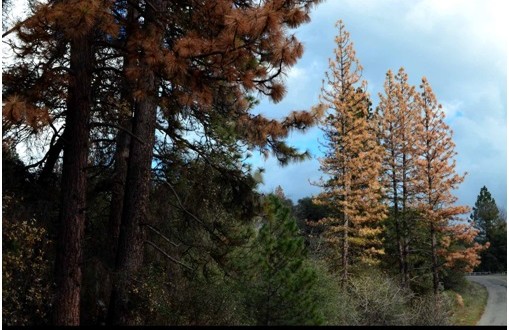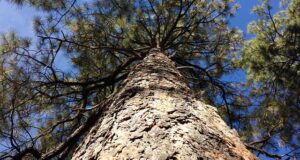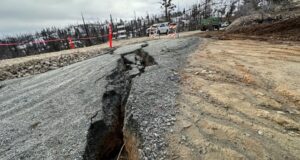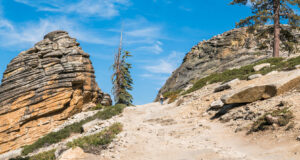Submitted by the Sierra National Forest
SIERRA NATIONAL FOREST – Following four years of drought, forests throughout the Southern Sierra are experiencing a tree mortality event at a scale unprecedented in recorded history. Locals and visitors to the Sierra National Forest (SNF) are well aware of this event, as dead trees are visible in staggering numbers throughout the landscape.
Beyond the direct effects of the drought itself, tree mortality has greatly increased as a result of the infestation by the western pine bark beetle. Though the beetle is native to this area, stress on trees from the drought has left them with weakened defenses, resulting in even higher mortality rates.
The SNF has been tracking the progress of this event since 2014, conducting ground and aerial surveys to better understand the extent of tree mortality and to help predict future spread. With our latest flight detection, it is estimated that 350,000 acres of Forest are affected, and that between the elevations of 3,000 and 6,500 feet, tree mortality rates are between 50-60 percent, with localized mortality even higher.
With resources available and a primary focus on public safety, the SNF has been prioritizing a response to this event.
Beginning in the summer of 2015 the Forest has been working with partners to fell and remove dead trees from campgrounds, recreation, permitted, and administrative facilities, and along our most developed roads. In light of the increased fuel load created with so many dead trees, fire suppression managers have been evaluating community defense plans.
The Forest continues to seek additional support and capacity to address tree mortality, and this issue has become a Regional priority, with the SNF identified as the “epicenter” for these compounded effects. Working with State, County, local, industry and public partners to address these issues, it should be expected that these efforts will continue for several years.
There are several things you can do to increase your personal safety when in the Forest. Remember to look up at the trees that are around you; if the tree is brown or red it is likely dead and is likely not a safe place. Keep an eye out for a lot of red pine needles on the ground, which can indicate nearby dead trees.
React to the things that you see and hear; if there is a loud crack or split, leave the area as limbs may be falling. Make sure that you do not pitch your tent or park your car under dead or dying trees. Remember that dead trees and limbs are more likely to fall during wind events, so drive and recreate with caution.




